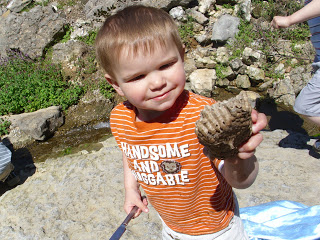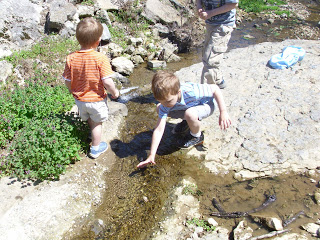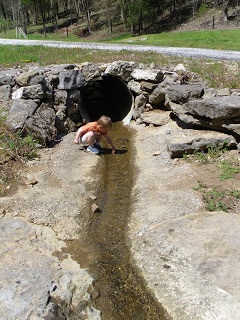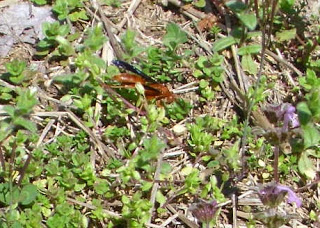“They are so fascinating, Mom.”
The words shocked me, really. They were spoken by our 7-year-old son who has been absolutely terrified of these little creatures ever since he stepped on one with his bare foot last year. Even though he didn’t want to touch our little inactive wasp nest collection, he was definitely into this.
A little background: We are in the process of fixing up the old guest house. In doing so, we’ve stripped the interior down to find many a wasp nest (amongst other things we won’t mention right now):
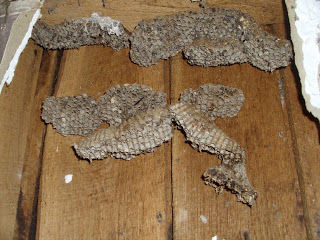 |
| Paper wasp nests between the sheet rock and wood siding |
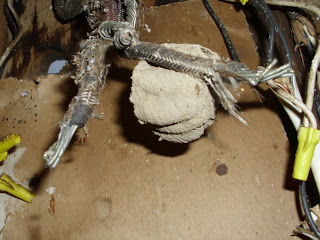 |
| Mud-dauber nest on old electrical wiring |
After referring to our First Book of Bugs (pages 39-40) and our Handbook of Nature Study (pages 429-435), we were able to discover a little about this wonderful world of wasps.
The Mud-Dauber Maternity Ward (A loner wasp)
Mud-dauber queens that have overwintered start to come out about this time of year to build their new nests. A mud-dauber finds mud around puddles or pools of water, mixes it with her saliva to create a sort of cement, and uses her jaw to create a home of plaster for her budding family. In building her nest, she first makes a tube about 1 inch long with walls about 1/8″ thick, leaving the end open. She leaves the nest in search of spiders, which she paralyzes with her stinger and stuffs into the little opening. After nearly filling the tubes with live but immobile spiders, she lays an egg in the midst of them and then closes the door with more plaster. She repeats this process several times, placing each room beside the previous.
Wasps are meat eaters, unlike the bees we discussed previously who instead make “bee bread.” This meat stays fresh for 2-3 weeks as the wasp grub emerges to feast on the live spiders set before him. When it has grown to about the size of its room, it weaves a silken tube around itself to go through its metamorphosis to a full-grown wasp. It then uses its jaw to cut a door to fly out into the world as a wasp.
 |
| Mud-dauber nest with two pupae exposed. |
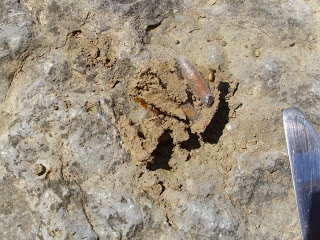 |
| Mud-dauber nest with one pupa removed. |
There exist approximately 70 species of mud wasps. Fortunately, mud-daubers do not sting severely. But I still don’t want to witness one emerging from its nest…
Paper-Nest Wasps: Original inventors of paper
There are many different wasps who make their houses with homemade paper, but the ones we battle around here are the plain old red wasps that make their homes in the eaves of our home (and in the walls of the guest house). Red wasps live together in their nests made of thin sheets of paper. They make this paper by shaving off bits of dead wood, which they chew to a pulp, mix with their saliva, and spread out to make their nest. A wasp nest may be divided into several combs (or layers), which are suspended from each other and the ceiling with strong paper columns.
 |
| Stephen shows us a paper column. |
Each comb is made up of hexagonal cells, in which the wasp lays her eggs.
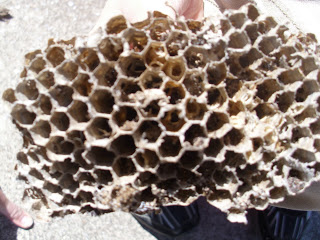 |
| A “dead” wasp nest. Wasps only use their nests during the summer, and they do not re-use old nests. Still, it’s kind of scary holding one of these for some reason. |

